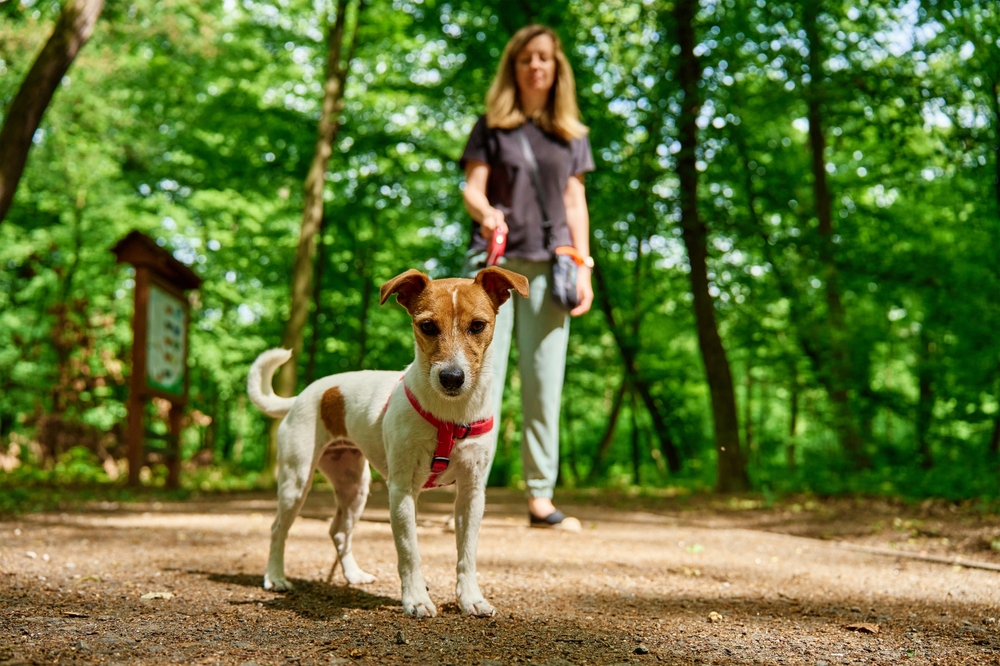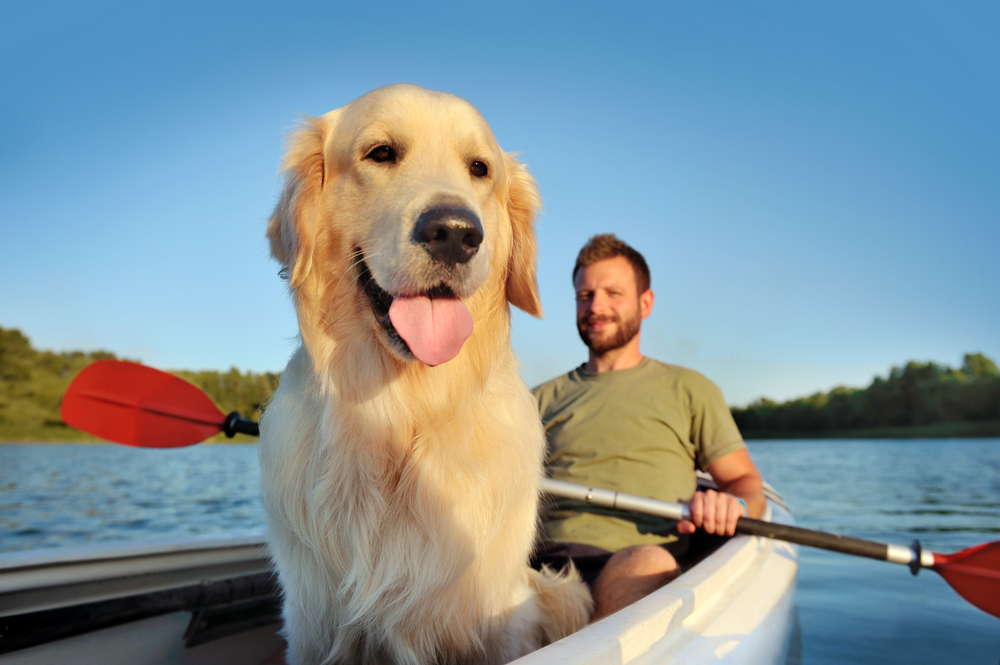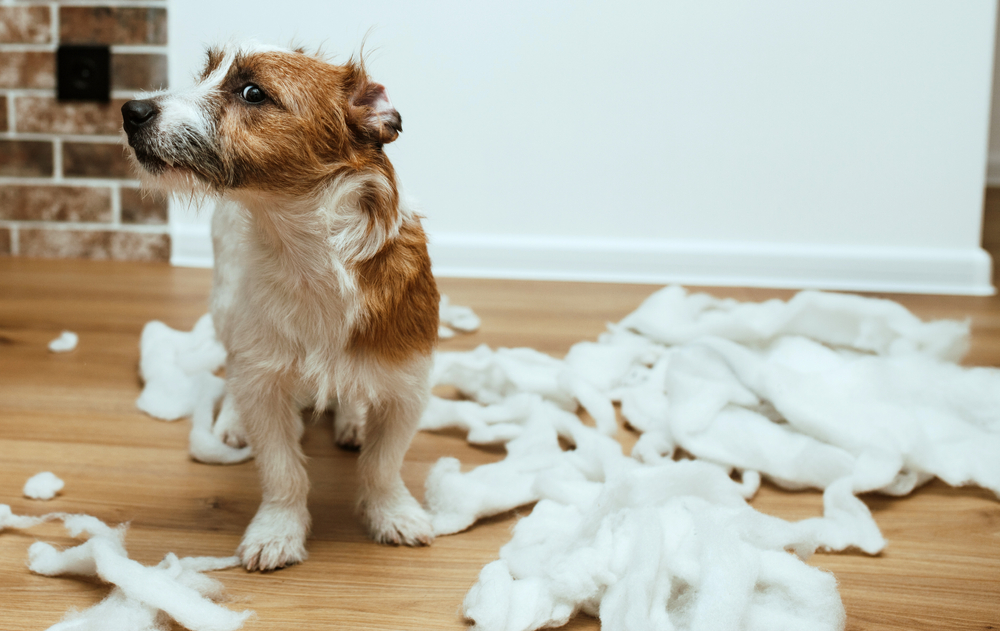These dog bonding tips will have you and your new pup vibing in no time!
So you’ve adopted a dog… Congratulations! You found your new best mate and have brought them home. Now’s the time to find ways to bond with your new dog! But, like in any new relationship, you have to get to know each other better.
This could be especially tricky if your dog has had a complicated past or a painful separation from their last owner. So, what’s the best way to bond and connect with your new canine companion?
The secret to bonding with a new rescue is to be patient and consistent, spend quality time together daily, be tolerant of mishaps, and don’t give up!
According to experts, most new dog owners can build a trusting relationship with their new best furry friend within three months. So to help you out along the way, here are 5 dog bonding tips that will strengthen your love with your new pal!

Dog bonding tip: Gradual socialization
Don’t push it! And, of course, in saying this, we’re not saying that you shouldn’t make socialization a priority. Introducing your pooch to new environments and situations gradually and when they’re ready is essential to helping your dog adjust to this new life.
The secret here is to pay careful attention to your canine and allow them to dictate the speed. For instance, if you want to introduce them to other dogs, don’t just throw them into a dog park and simply hope for the best.
You should start by spending time with them within the eyesight of a dog park. This will let them get used to the sounds, sights, and smells from a distance where they can still feel secure.
When they’ve adjusted to that, try moving a bit closer. Ultimately, you’ll be right outside the dog park comfortably, and you can walk right in.
Dog bonding tip: Playtime is the best time
We all know how much dogs love playtime. If your pup thinks that you’re fun to be around, they’re more likely to feel a stronger bond with you. So try to make some time to play with your pooch every day. This can be with toys like Frisbees, balls, or tug toys.
Or you can invent more imaginative games to play with them, like hiding treats and getting your dog to find them. Introducing small games into your day-to-day routine with each other can go a long way to helping you strengthen your bond.
Just keep in mind that some rescue dogs won’t know what to do with playthings. Now, we’re not saying that they’ll never want to play, but they were never introduced to “being a dog” in that sort of way.
Rather than giving up, slowly introduce toys and give them time to check them out and explore them in their own time. You can also play with them, showing them how much fun they can be.
If you have another dog, play with them where your rescue dog can see what you’re doing. This allows them to learn from your other dog and copy their behaviors.

Dog bonding tip: Find everyday activities you both enjoy
If you tried a basic obedience class that went well, why not build on that with a more advanced training class or some kind of dog sport? There are lots of options to choose from depending on your hobbies and preferences.
The idea is to find something you both can enjoy together. If you liked the training class environment, why not explore an advanced one? Or you can try a trick training class. There’s also agility, canine freestyle, scent work classes, or trick training.
For dog owners who are more outdoorsy, there are numerous choices that would fit your lifestyle. In the summer months, consider hiking and swimming with your pup.
You can also introduce them to kayaking, canoeing, or paddleboarding for some quality time together on the water. And when the colder weather arrives, the fun doesn’t have to stop. Hiking can be relished any time of the year.
If you live in a place that gets snowy, cold winter weather, try cross-country skiing, snowshoeing, or skijoring with your pooch. You might also be interested in exploring the world of mushing, a.k.a. pulling a dog sled.
And of course, when all else fails, you can always grab a toy and play with them in the backyard! Here’s one of our favorites from Amazon: K9 Training Ball with Rope Exercise and Reward Toy for Dogs
Dog bonding tip: Trust must be earned
In numerous cases, rescue dogs have gone through some challenging things in their past. The mere fact that they were with a rescue or in a shelter in the first place is bad enough, let alone a history of neglect or abuse.
Due to this, some can be wary or timid of new individuals and their intentions, which is completely normal!
Even though all the aspects of bonding with a rescue dog can help build that trust that’s vital for a loving bond, there are certain things you can do to get your rescue dog to trust you.
The first thing you should do is to avoid exposing them to any triggering circumstances. This can include yelling and loud noises in general or being around pets or people that could make them nervous.
For instance, due to a bad experience, some dogs could be scared of large dogs or men. Periodically, knowing your dog’s history could help you realize what situations and behaviors to avoid. Another thing to keep in mind is that you shouldn’t push your rescue dog into anything.
You may want them to relax faster and be eager to snuggle or go and be social in the doggie park.
But if they’re not there yet, pressuring them will only make matters a hundred times worse. Remember that, generally, it’s about taking the baby steps way and letting your new beloved pet signal you when something is or isn’t OK.

Dog bonding tip: Pay attention to body language
Dogs can’t speak, right? But they CAN communicate with us non-verbally. All the signals you’ll need to decipher your rescue dog’s behavior and needs are there. You just have to be able to spot what their body language is trying to tell you.
There are five classes of body language for canines: fearful, excited, anxious, aggressive, and relaxed.
You may not know your pet well enough to identify all of its peculiarities, but educating yourself about the basics of a dog’s body language can go a long way to building a strong bond with your furry pal.
Once you understand how your pet feels, you’ll learn how to approach them best. If your rescue dog is already relatively relaxed around you, you can move forward and begin working on turning that sense of safety into a bond.
In the end, it’s the little things that will make your pup bond with you and become a happy member of your family for many years to come.
What do you think of all these dog bonding tips? Please feel free to share your thoughts with us in the comments section below. But don’t leave yet! If you liked this article, Pet Compilation has many more like it.
For instance, we highly recommend also checking out: 12 Brave Things Dogs Do to Keep Us Loved and Safe













One Response